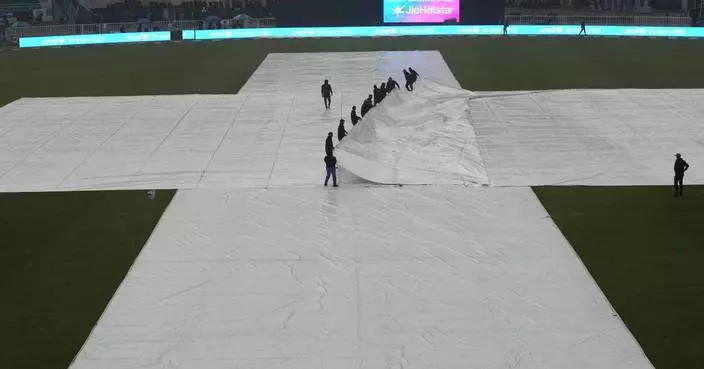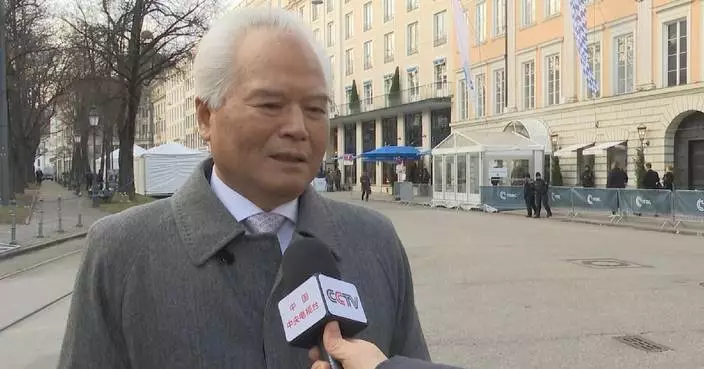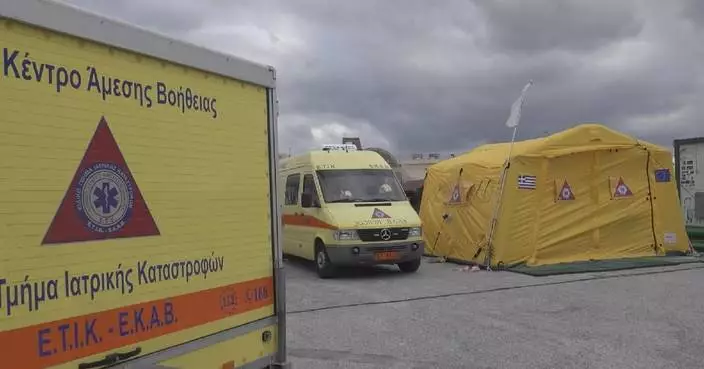The 606 men refusing to leave an Australian immigration camp in Papua New Guinea were without power and many of their toilets on Wednesday as reports emerged saying one of them had resorted to harming himself while others needed urgent medical treatment.

In this undated photo released by Refugee Action Coalition, refugees and asylum seekers hold up banners during a protest at the Manus Island immigration detention centre in Papua New Guinea. (Refugee Action Coalition via AP)
The camp inside a Manus Island navy base was declared closed Tuesday afternoon based on the Papua New Guinea Supreme Court's ruling last year that Australia's policy of detaining asylum seekers there was illegal and unconstitutional. But the men who have stayed at the camp on Lombrun Navy Base fear for their safety in the alternative shelters available in the nearby town of Lorengau because of threats from locals.
The Sydney-based Refugee Action Coalition said the removal of electricity generators Wednesday morning left the camp without power, including toilets that operate on electrical pumps. They still have tap water, though the coalition says it isn't drinkable.
As the asylum seekers faced a second nervous night at the now-unguarded facility amid ongoing fears of violence from locals, an Iranian man living there, Behrouz Boochani, tweeted: "A refugee has harmed himself with a razor. He cut his wrist and chest. Physically he's good now but mentally is out of control."

In this photo made from Australia Broadcasting Coporation video made on Tuesday, Oct. 31, 2017, asylum seekers protesting the possible closure of their detention center, on Manus Island, Paua New Guinea. (Australia Broadcasting Coroporation via AP)
In another tweet, Boochani said: "Some refugees are very sick. They need urgent medical treatment. They have been physically sick for a long time. There is no support for them." He added later that "a Rohingya refugee with epilepsy is sick now."
Boochani also tweeted that Papua New Guinea immigration officials had sent a bus to the center Wednesday morning to take refugees to their alternative accommodation in Lorengau, but that "the refugees are still refusing to go. Immigration is saying (it's) your choice".
The Refugee Action Coalition has applied to the Supreme Court for an injunction stopping the closure of the camp. Coalition spokesman Ian Rintoul said the first night without security staff guarding the residents had at least passed peacefully.
"The men are sitting tight for the moment," Rintoul said. "The situation isn't great, but at least there were no attacks during the night."

This photo made from Australia Broadcasting Corporation video taken on Tuesday, Oct. 31, 2017, shows asylum seekers protesting the possible closure of their detention center on Manus Island, Paua New Guinea. (Australia Broadcasting Corporation via AP)
Rintoul said some locals brought food and drinking water to the perimeter fence, some selling it to the men, others donating it.
Papua New Guinea officials had said the facility would be returned to defense forces on Wednesday and that anyone remaining would be considered to be trespassing on a military base. However, that failed to happen on Wednesday, as a standoff continued.
Australia's acting prime minister, Julie Bishop, standing in for Malcolm Turnbull during his visit to Israel, said it made "no sense" for detainees to remain at the center, but she could not guarantee their safety if they left the camp.
"The Papua New Guinea government is a sovereign government and is responsible for law and order and security on their islands in their nation," Bishop told ABC radio.

This photo made from Australia Broadcasting Corporation video taken on Tuesday, Oct. 31, 2017, shows housing of asylum seekers protesting the possible closure of their detention center, on Manus Island, Paua New Guinea. (Australia Broadcasting Corporation via AP)
She said food, water, electricity and medical services would be provided at alternative accommodation on the island.
For four years, Australia has paid Papua New Guinea, its nearest neighbor, and the tiny Pacific island nation of Nauru to house asylum seekers who attempt to reach the Australian coast by boat. They are Rohingya Muslims from Myanmar, Afghans, Iranians, Sri Lankans and other nationalities.
Australia has recognized that many of the asylum seekers are refugees who cannot return to their homelands, but it refuses to resettle anyone who tried to reach the country by boat in a policy it credits with dissuading such dangerous ocean crossings. Some whose refugee claims were denied have been forcibly sent home.
But Australia and Papua New Guinea still disagree on who has responsibility for those Australia has recognized as refugees yet won't accept on its own soil.
The United States has resettled 54 of them in recent weeks and is considering taking almost 1,200 more.
The men are free to come and go from the Manus Island camp, which is no longer a detention center since the court ruling, but they've reported robberies and violence directed at them when they go into the community.
Of the 606 men, some 440 have been deemed to be legitimate refugees, while the remainder are categorized as non-refugees, including around 50 who have refused to cooperate with the determination process as they say they were unlawfully transferred to Papua New Guinea.
Papua New Guinea authorities have deployed extra police to the town of Lorengau, where the three new housing centers are located. A protest of about 100 people earlier this week demanded Australia take back the men and they not live in the community.
Australian opposition Greens senator Nick McKim, who is on Manus Island, has labeled Immigration Minister Peter Dutton a "monster" over his handling of the closure of the center. He warned that deaths were inevitable and that Dutton "could have blood on his hands."




















































